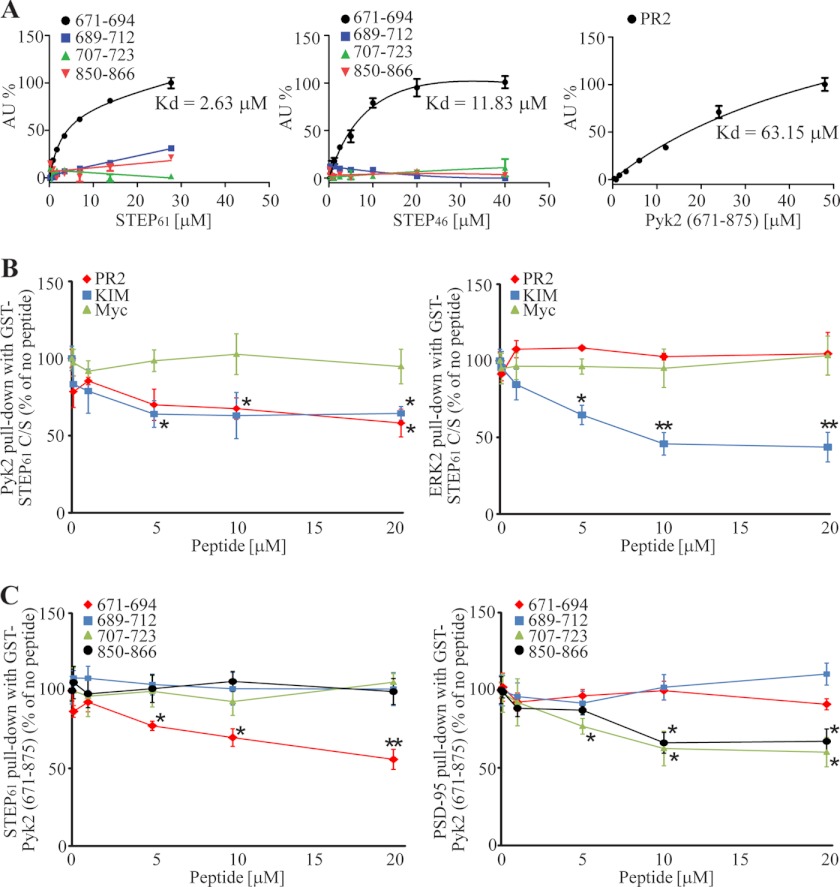FIGURE 6.
PR2 and KIM domains of STEP61 and residues 671–694 of Pyk2 mediate STEP/Pyk2 interaction. A, FITC-conjugated Pyk2-derived peptides 671–694, 689–712, 707–723, and 850–866 were titrated with GST-STEP61 (left) and -STEP46 (middle), and STEP-derived PR2 peptide with GST-Pyk2(671–875) (right). Binding was monitored by FP. For each graph, the signals were normalized, setting as zero the lowest value and as 100% the highest value measured, and fitted to saturation curves. Calculated binding affinities of 671–694 for GST-STEP61 and -STEP46 and of PR2 for GST-Pyk2 671–875 are indicated. AU, absorbance units. Error bars indicate the SEM of at least three independent experiments (in this and subsequent panels). B and C, competition of PR2, KIM, and Myc (control) peptide with GST-STEP61 for Pyk2 and ERK2 (B) and of the Pyk2-derived peptides with GST-Pyk2(671–875) for STEP61 and PSD-95 (C) by increasing concentrations of peptides (as indicated) in pulldown assays with GST-STEP61 (B) and GST-Pyk2(671–875) (C) using brain lysates as the source of native proteins. Pyk2 and ERK2 (B) and STEP61 and PSD-95 (C) were determined by immunoblotting (*, p < 0.05; **, p < 0.01; one-way ANOVA with post hoc Tukey test; n = 4).

